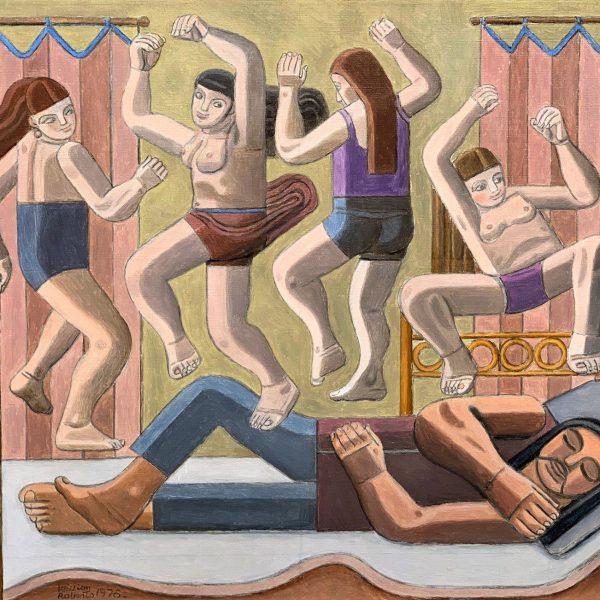DR DARREN CLARKE, HEAD OF COLLECTIONS, RESEARCH AND EXHIBITIONS, CHARLESTON
CHARLESTON
DR DARREN CLARKE, HEAD OF COLLECTIONS, RESEARCH AND EXHIBITIONS, CHARLESTON
Dr Darren Clarke is the Head of Collections, Research and Exhibitions for the Charleston Trust. He trained as an artist but now prefers looking and talking about other people’s work, particularly that of the Bloomsbury artists Vanessa Bell and Duncan Grant, though he does like living artists too.
He has curated several exhibitions including Orlando at the present time (2018), and Post-Impressionist Living: The Omega Workshops (2019). He has published several articles and essays, with a particular interest in Bloomsbury’s LGBTQ+ history. He is editor of the Charleston Press. He lives in Brighton and probably always will do.
“I have chosen three paintings from this year’s London Art Fair. As curator of Charleston, the former home of the artists Vanessa Bell and Duncan Grant, I get to see a lot of their work and painting was a huge part of their creative output. In their home they surrounded themselves with colour, texture, and comfort. Maybe these interests are reflected in the choices that I have made. The three works, all figurative subjects, have a sensual quality, with a distinctive use of colour and form that bring both a peacefulness together with a sense of unease.
Keith Vaughan has long been a favourite artist of mine. I curated a small display of his work several years ago, so to see such a wonderful collection of his work with the Zuleika Gallery was very exciting and I couldn’t resist including one of his series of Assembly paintings in my selection.
Making this selection has provided me with a new favourite artist. Abe Odedina’s wonderfully tender and forthright figures bring and wit and intensity to the traditions of African art.
There is real strength in the fragility and ethereal nature of Gill Button’s paintings that really appeals to me. They leave space for deep contemplation.”
CLICK ON IMAGE TO ENLARGE
Gill Button, Nuage, 2020. Courtesy of James Freeman Gallery.
“I feel that I must give my full attention to every detail of this canvas, because, like the cloud in the title, it feels like it is going to dissolve and reform at any moment. Gill Button’s lucid works are filled with a beauty and a sadness.”
Keith Vaughan, Blue Assembly, 1972- 77. Courtesy of Zuleika Gallery.
“Keith Vaughan is one of my favourite artists. I like his queering of the art historical cannon and his wonderful irresponsible use of paint! I particularly like the tantalising ambiguity of his series of Assembly paintings, what is going on? Is it your darkest fears and deepest desires?“
Abe Odedina, To abundance, 2019. Courtesy of Ed Cross.
“The gold tooth in Abe Odedina’s To abundance suggests a material wealth but this wonderfully direct work seems to give the viewer licence to project their own emotions onto the work. I think we’ve all been open mouthed a some of the events of the past 12 months.”
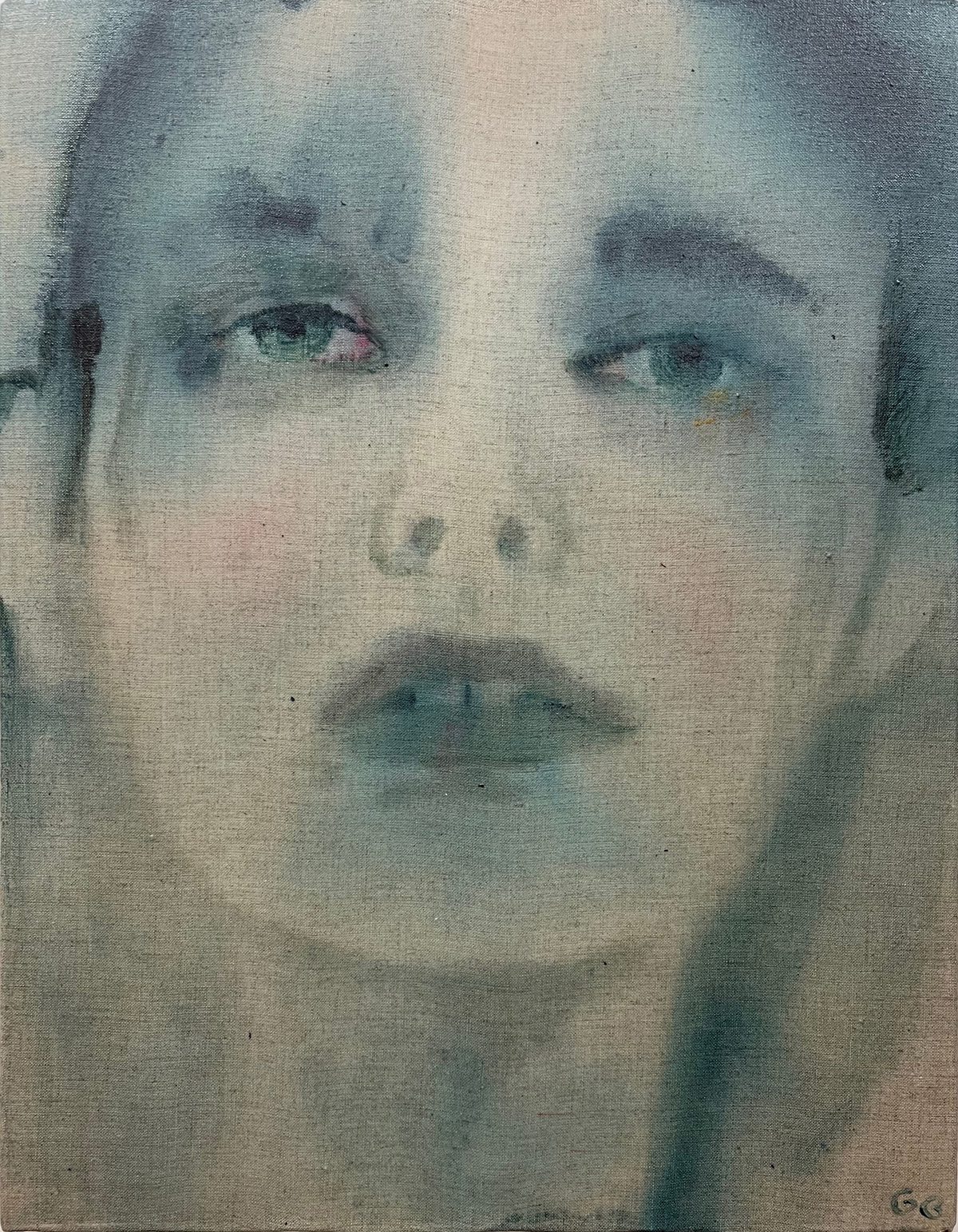
Gill Button, Nuage, 2020. Courtesy of James Freeman Gallery.
“I feel that I must give my full attention to every detail of this canvas, because, like the cloud in the title, it feels like it is going to dissolve and reform at any moment. Gill Button’s lucid works are filled with a beauty and a sadness.”
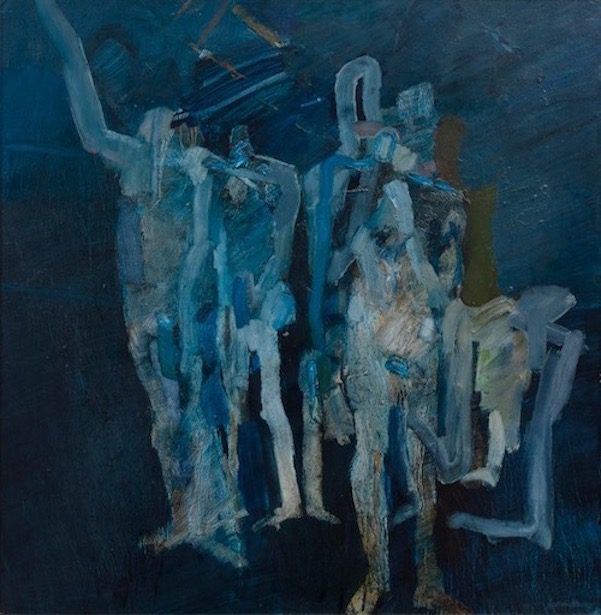
Keith Vaughan, Blue Assembly, 1972- 77. Courtesy of Zuleika Gallery.
“Keith Vaughan is one of my favourite artists. I like his queering of the art historical cannon and his wonderful irresponsible use of paint! I particularly like the tantalising ambiguity of his series of Assembly paintings, what is going on? Is it your darkest fears and deepest desires?“
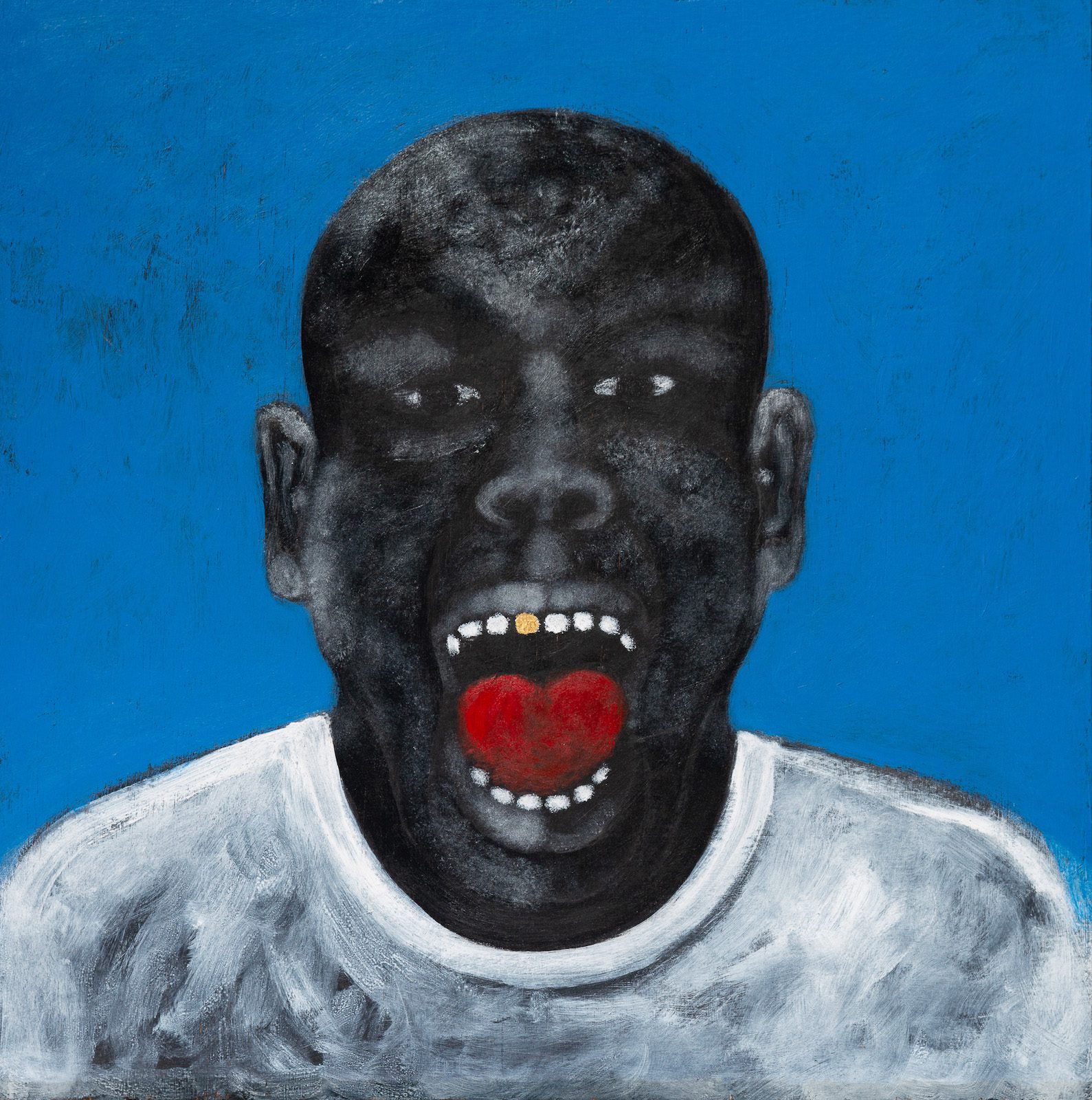
Abe Odedina, To abundance, 2019. Courtesy of Ed Cross.
“The gold tooth in Abe Odedina’s To abundance suggests a material wealth but this wonderfully direct work seems to give the viewer licence to project their own emotions onto the work. I think we’ve all been open mouthed a some of the events of the past 12 months.”
EMILY HILL
HOUSE, COLLECTION AND EXHIBITION MANAGER, CHARLESTON
Emily Hill is part of the curatorial team at Charleston that manages the historic house of the Bloomsbury group, art and design collection, historic and contemporary exhibition programming as well as publishing and new research. She writes on material culture and design history, lives in Brighton and enjoys short walks to nearby bakeries.
“I’m inspired by the Bloomsbury lives and the art and design that surrounds us and fills every inch of the house at Charleston; I love and look for a strong sense of colour, elements of craft and design, still lives and interiors that say something about life or the way it should or could be lived.
I think this year in particular I am drawn to work that is instilled somehow with a sense of fun, movement, freedom, tactility; all the things I miss about seeing art in real life or more precedented times.
My selections reflect my fascination with the material culture of the everyday, the domestic, our dreams, traditions and interior lives. But each also looks outward, to dancing, to travel, to culture and to vessels extra full.”
William Roberts, Dream of Dancing Women, 1978. Courtesy of Goodman Fine Art.
“This dynamic painting by William Roberts explores movement, fantasy and fun. I like the warm sensual palette, flattened perspective and clarity of composition. The interior elements, the brass bed and brightly trimmed flushed pink textiles, are simultaneously stern and decorative. I suppose I also have dreams of dancing at the moment…”
Maya-Inès Touam, Tryptich Untitled I, 2019. Courtesy of African Arty.
“Maya-Inès Touam’s tryptich is a visual picnic. I am drawn to the play of golden light and darkness, the mix of objects of the everyday, the traditional and the precious. Touam’s work speaks to the poetry of objects and the power they have to represent certain aspects of ourselves, it is allegory in action.”
Marice Cumber, The Vessel of No Value, 2020. Courtesy of Louisa Warfield Art Consultancy.
“Produced in 2020 this ceramic work by Marice Cumber has an arresting immediacy. It shows the power of written word in art to directly communicate ideas. This ceramic vessel has the words ‘Extra Empty Extra Full’ on the reverse, which to me, says something of both the despair and great comfort of the home and domestic space in relation to the past year.”
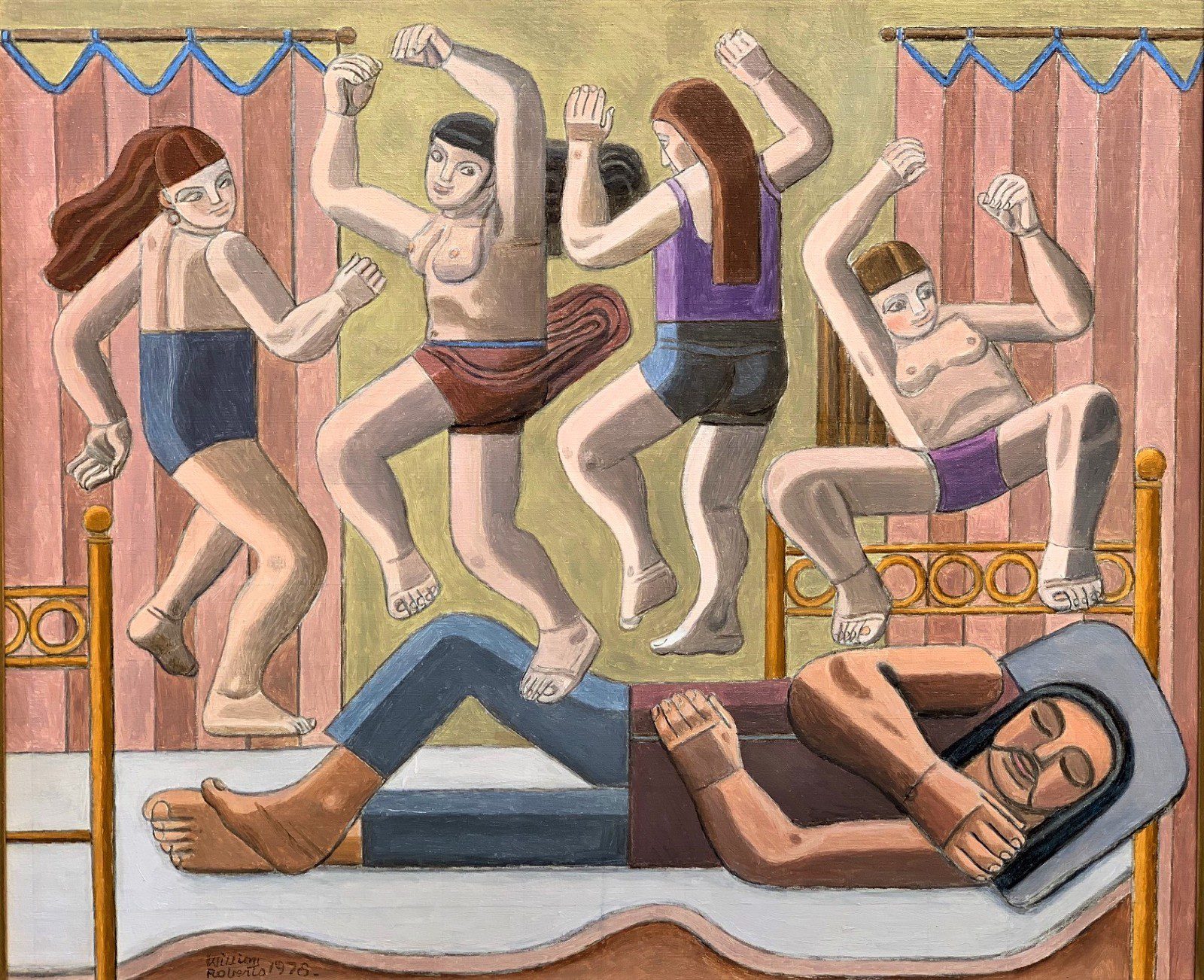
William Roberts, Dream of Dancing Women, 1978. Courtesy of Goodman Fine Art.
“This dynamic painting by William Roberts explores movement, fantasy and fun. I like the warm sensual palette, flattened perspective and clarity of composition. The interior elements, the brass bed and brightly trimmed flushed pink textiles, are simultaneously stern and decorative. I suppose I also have dreams of dancing at the moment…”
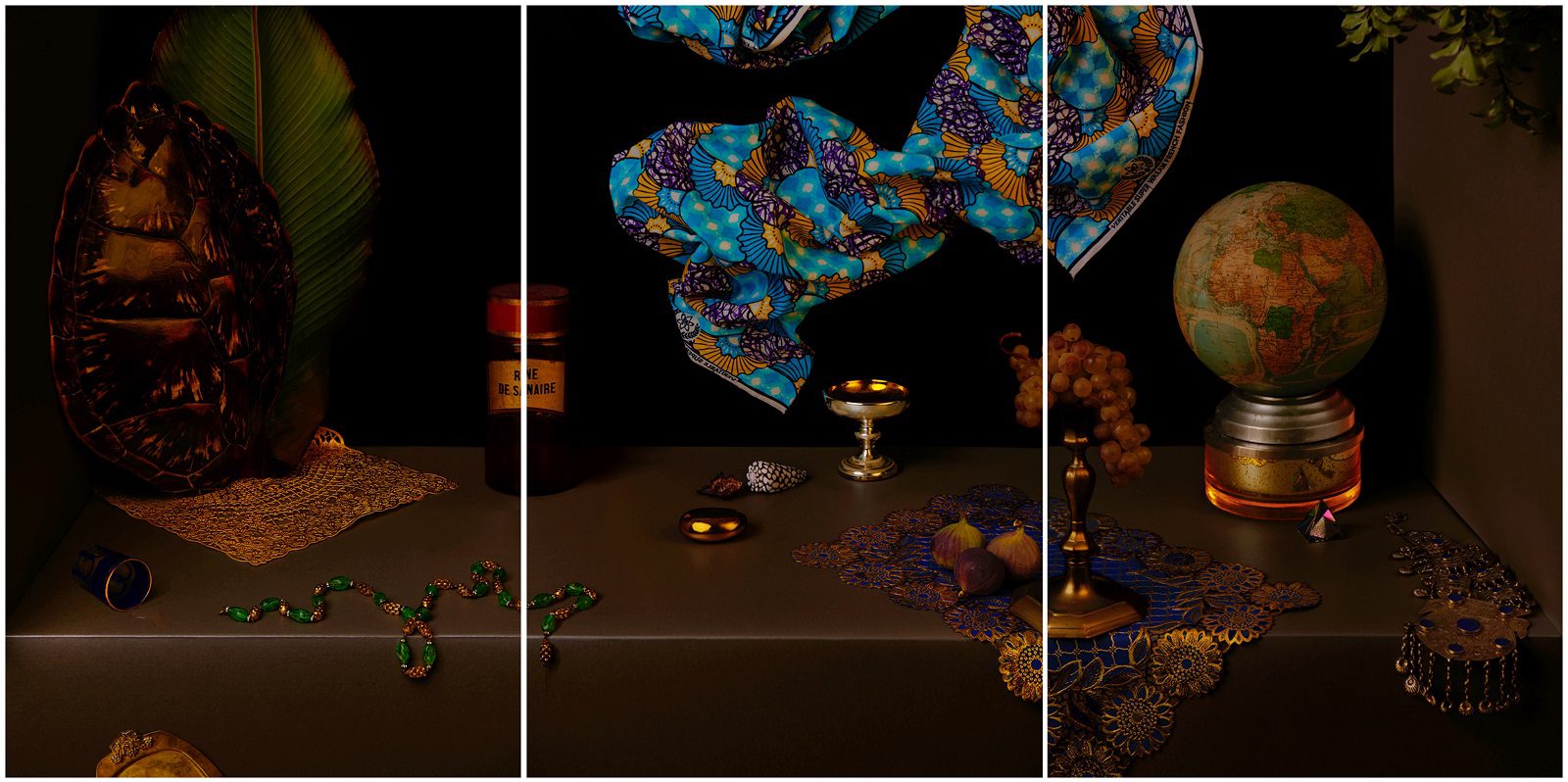
Maya-Inès Touam, Tryptich Untitled I, 2019. Courtesy of African Arty.
“Maya-Inès Touam’s tryptich is a visual picnic. I am drawn to the play of golden light and darkness, the mix of objects of the everyday, the traditional and the precious. Touam’s work speaks to the poetry of objects and the power they have to represent certain aspects of ourselves, it is allegory in action.”

Marice Cumber, The Vessel of No Value, 2020. Courtesy of Louisa Warfield Art Consultancy.
“Produced in 2020 this ceramic work by Marice Cumber has an arresting immediacy. It shows the power of written word in art to directly communicate ideas. This ceramic vessel has the words ‘Extra Empty Extra Full’ on the reverse, which to me, says something of both the despair and great comfort of the home and domestic space in relation to the past year.”




